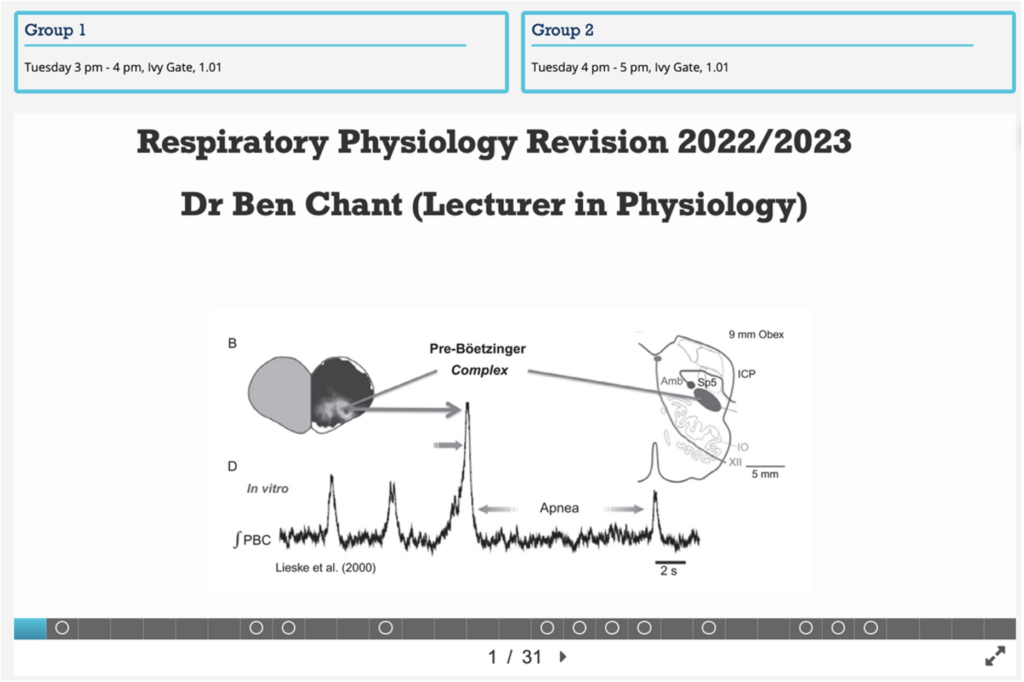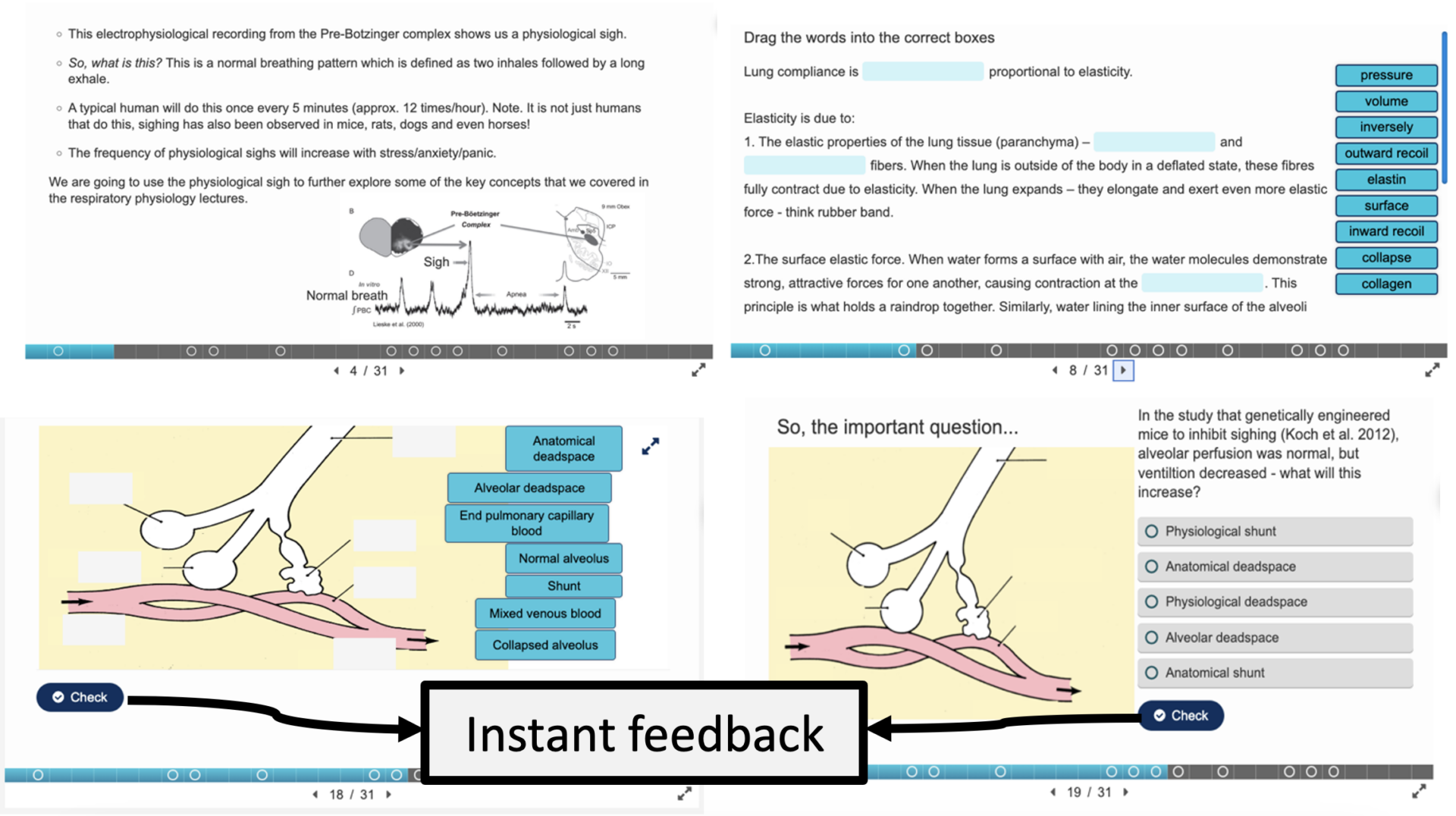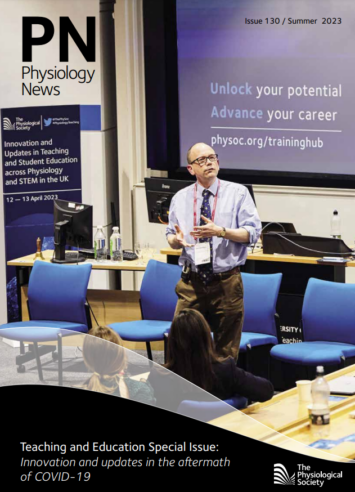
Physiology News Magazine
Ben, how is it that you manage to make learning respiratory physiology fun?
My reflections on using H5P for developing an interactive workshop for respiratory physiology
News and Views
Ben, how is it that you manage to make learning respiratory physiology fun?
My reflections on using H5P for developing an interactive workshop for respiratory physiology
News and Views
https://doi.org/10.36866/pn.130.12
Dr Ben Chant
Lecturer in Physiology, University of Bristol, UK
Background and development
Student-centred, active learning is one of the cornerstones of engaging students. Increasing student numbers and limited space in lecture theatres has increased the need for low-cost methods for accommodating large numbers of students. To meet these needs I used H5P, a free, mobile-friendly, opensource HTML interface that does not require technical expertise. H5P can be designed from within Blackboard (our online learning environment) so content can be directly embedded and integrated into other teaching material (see Fig.1). One of the benefits of using the course presentation feature in H5P is that it is easy to integrate several tasks into one interactive workshop; for example, fill in the missing words, calculations, drag & drop, multiple choice questions (MCQs), and true or false questions. Previous research has shown that interactive content developed by H5P is effective for self-paced and self-directed asynchronous learning in physiology (Sinnayah et al., 2021), but with increasing demand for more in-person teaching, my aim was to develop an integrative respiratory physiology workshop using H5P for use in an in-person workshop.
For some context, this workshop was designed for our physiology, pharmacology, and neuroscience first-year students who all take a common physiology unit. This is taken by around 220 students who typically find the core concepts of respiratory physiology challenging. The students had one face-to- face lecture to introduce core concepts, followed by six asynchronous lectures and two practical classes (static and dynamic lung volumes). My initial aim was to find a way of integrating this material, while anchoring it to something that students can relate to daily living. I was listening to Dr Jack Feldmen talk about his career in respiratory physiology on a podcast and they were discussing the integrative aspects of the physiological sigh. Physiological sighs are those spontaneous deeper breaths most humans take roughly once every five minutes. Try focusing on your breath for 10 minutes and count how many spontaneous deeper breaths you take, and you’ll see what I mean. After trying this myself, it inspired me to design a problem based learning session, using H5P, where students integrate the material across the lectures to consider the problem: what are the functions of the physiological sigh.

Reflections and recommendations
I took full advantage of the capabilities of H5P for this session, and integrated various tasks for students to complete, including interpretation of data, fill in the missing words, calculations, Padlets for discussion, drag & drop tasks, MCQs, short clips of YouTube videos and short reading tasks (see Fig.2 for examples). Students were encouraged to work in small teams to complete tasks. H5P offers immediate feedback for each task, and this encouraged self-reflection from the students and helped facilitate conversation about gaps in knowledge and further revision.

Instant feedback
As this was the first year that we used H5P in this format, we did not collect specific feedback from students about the session. However, in their unit feedback one student commented, ‘Ben delivered his content very well and the workshop really helped my understanding of each topic.’ It’s also worth noting that in the workshop, students stated to staff that the session helped them identify gaps in knowledge, integrate material, and to see how the material taught in lectures applies to daily life. Going forward, I will definitely be integrating more H5P course presentations into my teaching, and I plan to think about how this could be used to integrate across topics in physiology (e.g. cardiorespiratory physiology). I plan to collect more feedback from students and assess how this style of teaching impacts their learning.
Watch this space…
References
Sinnayah P et al. (2021). Reimagining physiology education with interactive content developed in H5P. Advances in Physiology Education 45, 71-76. https://doi.org/10.1152/advan.00021.2020
